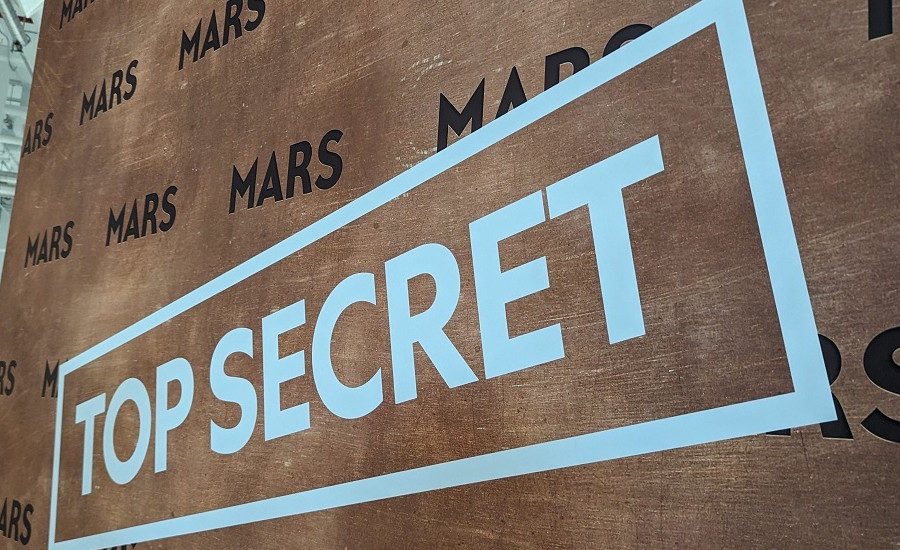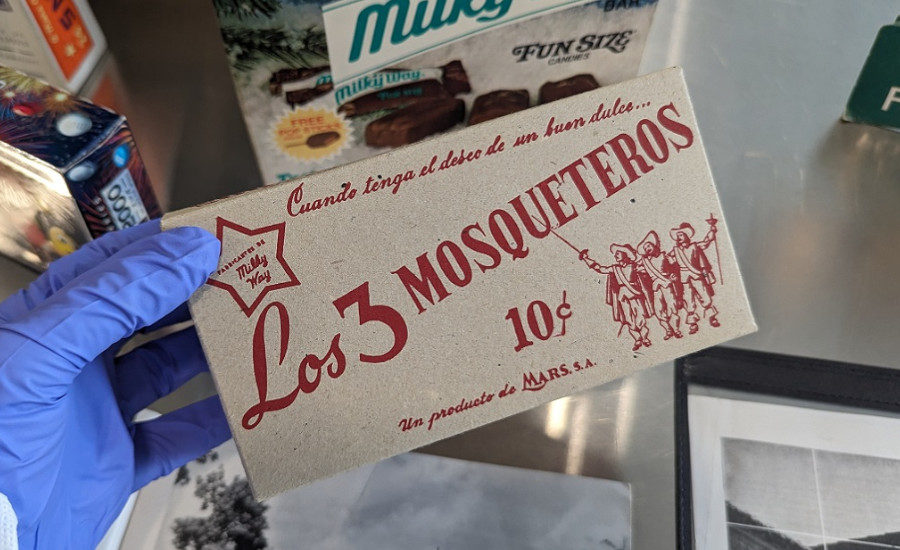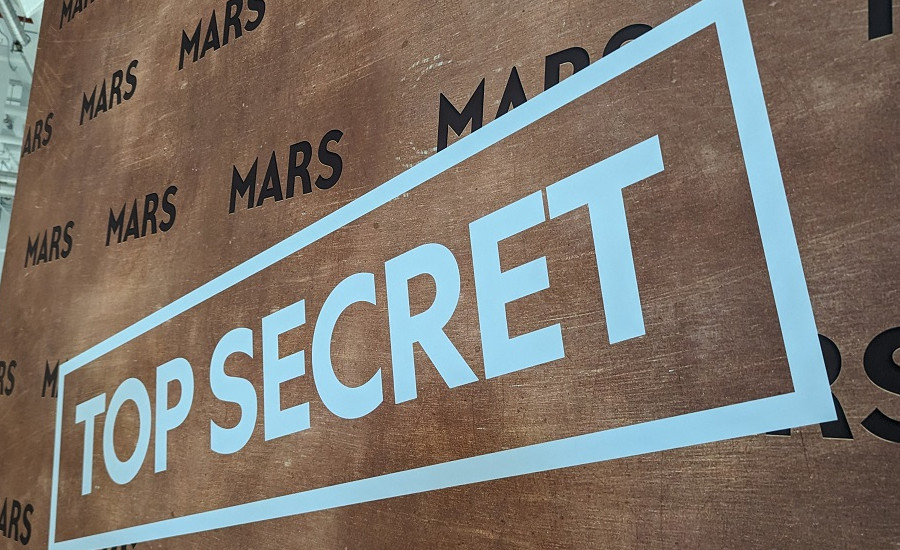Mars opens doors on new Global Research and Development Hub in Chicago
The 44,000-square-foot facility constitutes a $42m investment in the candy producer’s future innovation.

Mars Wrigley’s historical relationship with history in Chicago dates back more than a century (William Wrigley Jr. introduced Juicy Fruit and Wrigley’s Spearmint gums in 1893). The 2024 opening of the Mars Global Research and Development Hub marks the latest chapter.

Visitors to the Mars Global Research and Development Hub are greeted with a mural that features the façade of the facility, adorned with graphic elements tying in the company’s famed products and its connections to the city of Chicago.

Amanda Davies—chief procurement, sustainability, and R&D officer at Mars—shared an overview of the new Global Research and Development Hub, the company’s innovation strategy, and more before the official ribbon-cutting ceremony.

Many of the Mars staff members awaiting the ribbon cutting sported limited-edition M&Ms Adidas sneakers. Apparently the exclusive footwear is in such short supply that some of the top-level executives are still awaiting pairs of their own.

Ribbon-cutting ceremonies typically involve oversized pairs of scissors. The opening of the Mars Global Research and Development Hub was no exception—for this occasion, the company procured a special golden pair of scissors emblazoned with the company logo.

R&D team member Teri Troxel showed off the Clean Nut Kitchen and Roasted Nut Room in the Mars Global Research and Development Hub. Troxel also told visitors about the network of 20,000 nut farmers the company works with around the globe.

A pass-through window connects the Roasted Nut Room, where various nuts are examined and tested, and the Clean Nut Kitchen (a controlled-environment space) of the Mars Global Research and Development Hub.

A Mars team member watches over a test back of caramel in the Prototype Kitchen of the Mars Global Research and Development Hub. In this space, fillings like caramel and nougat are tested, bar fillings are slabbed, and other recipes are evaluated.

In the Mars Global Research and Development Hub’s Prototype Kitchen, R&D team members often evaluate caramels, as well as other candy components and ingredients, to ensure they bear the desirable color, consistency, taste, and more.

A row of bars consisting of chocolate-enrobe caramel slabs await evaluation in the Prototype Kitchen of the Mars Global Research and Development Hub.

The Panning Room of the Mars Global Research and Development Hub features six drums, several with liners specially designed by the R&D team. Here, chocolate and other ingredients are tumbled in test batches of M&Ms and other confectionery items.

Peanuts are tumbled in a coating of chocolate inside one of the drums of the Panning Room in the Mars Global Research and Development Hub. Later the chocolatey nuts will also be coated with the signature M&Ms outer candy shells.

Mars staff watch rows of the peanutty base for a batch of Snickers Hi-Protein bars being formed, making their way to the guillotine that will cut them into pieces on the Mars Global Research and Development Hub’s bar line.

A flow wrapper sits idle, waiting for its turn in the action at the end of the Mars Global Research and Development Hub’s bar line. On the day of the visit, the line was working on a batch of Snickers Hi-Protein bars.

Near the conclusion of the tour, Mars Wrigley’s resident historian David Borghesani treated visitors to an overview of the history of chocolate, how cocoa journeys from bean to chocolate to Mars products, and how the company has evolved since its early days.

The tour of the Mars Global Research and Development Hub included a view of several historical photos and artifacts from the company’s history. Among the relics were vintage product packages, including this Spanish-language carton of Three Musketeers bars.

The guests who toured the Mars Global Research and Development Hub were sent home with an assortment of Mars Wrigley treats, including a pouch of Skittles only sold in China and Snickers bars in special packaging paying tribute to the company’s home city.

















On January 18, Mars held a ribbon-cutting ceremony at its newest, and largest to date Global Research and Development Hub. Located in the city’s Goose Island area, the facility will host development of product and packaging innovation involving the company’s popular candy and snack brands, including Snickers, M&M’s, Twix, and others.
As Snack Food & Wholesale Bakery chief editor, I was among the fortunate group of media members, local officials, area historians, and other visitors invited to attend a ribbon-cutting ceremony marking the official opening of the hub. The 44,000-square-foot facility includes a bar line, roasted nut kitchen, test kitchen, panning equipment, printing area, flexible pilot line, and even a store where visitors can procure candy and branded souvenirs.
Understandably, not all of the state-of-the-art facility’s features were on view or can be shared with SF&WB readers. However, there was still a lot to see on our tour—for just a selection of the hub’s sights, scroll through the photos on this gallery.
Looking for a reprint of this article?
From high-res PDFs to custom plaques, order your copy today!























